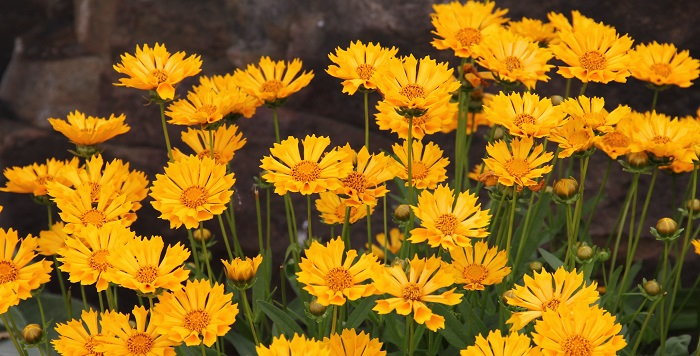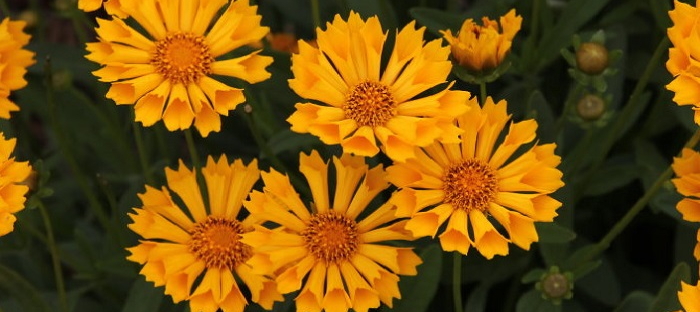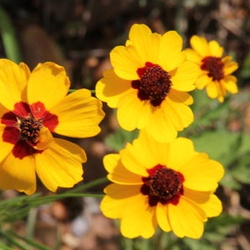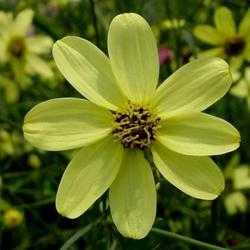Lanceleaf coreopsis (Coreopsis lanceolata) is a North American native that originated in the eastern and central part of the continent, however this is a tough little number that has naturalized just about everywhere. It is a welcome sight in the fields and prairies here in North America, but has reached invasive status in Asia where they used it along water ways and train tracks as a greenbelt planting. Luckily, this sunny little short-lived perennial behaves itself in its native area and although it can spread into sizable colonies, there is never a threat to other species there.
Many gardeners use it in sunny, well-drained areas and the golden yellow flowers often bloom for about 3 weeks in early summer. Deadheading the spent blossoms will prolong the show. Clumps spread out from the center by underground runners and a mature plant has a pleasing, rounded form. It is always wise to let a few flower heads mature so that along with the root spread, seedlings can reinvigorate the clump. The strong stems make it a great choice for a cutting garden and taking the flowers only encourage more to take their place. Plant seeds in early spring, or divide clumps of established growth by teasing the younger rosettes apart from the main crown. Keep moist, but don't overwater until new growth appears. After the plants settle in, they are drought tolerant, however blooming will suffer since that is a survival mechanism allowing your coreopsis lives to bloom another season.

Wildlife gardeners know the value of the lanceleaf coreopsis as well. This is an important pollen source for our fragile honeybee population and many butterflies also enjoy visiting the sunny blossoms. Unfortunately, Bambi also finds this plant attractive, so if you are plagued by deer it might be smart to choose another plant. This is a tough little plant that few pests or diseases tend to bother, so it isn't a garden wimp. The only thing I've experienced is that the flower stems tend to flop over after a heavy rain, but that's the same for most plants in the Asteraceae family. It's just part of the territory.
Along with the native species, hybridizers have developed cultivars with a number of interesting traits. My favorite, and the one I have in my garden is 'Jethro Tull'. The petals of the flowers curve into each other and probably reminded the person who named it of Ian Anderson's flute. (For those of you who aren't familiar with Jethro Tull, they were a progressive rock band from the 1970's that bravely featured the flute instead of electric guitars) The images in this article are of my Jethro Tull coreopsis.
As far as I can determine, there are no medicinal properties in the lanceleaf coreopsis, however it does produce a yellow-toned natural dye much like its cousin, Coreopsis tinctora (my previous article on it can be found here) . The C. tinctora produces a more intense version, but the C. lanceolata will work. It just takes more flowers to achieve the same result. You can even mix the two if you do not have enough material of one type.
Coreopsis lanceolata is a great choice for any gardener with a sunny spot. The plants are inexpensive and produce a great bang for your buck.

















